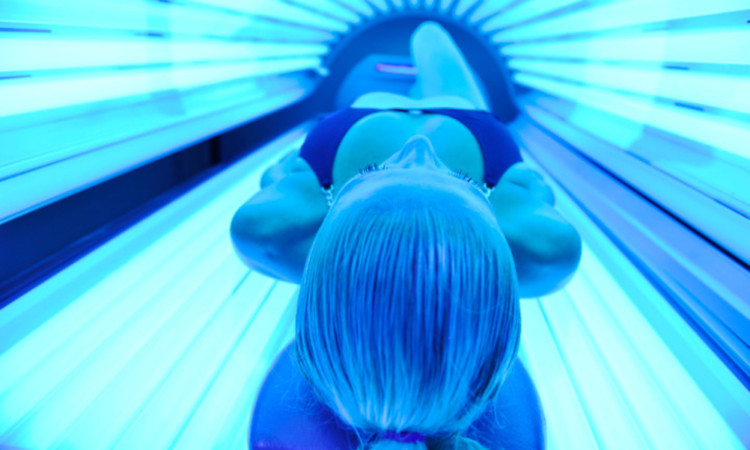
A staggering number of tanning salons are failing vital safety tests putting users at increased risk of cancer.
Nearly seven in 10 sunbeds tested by council inspectors in the north of England over the past two years pumped out dangerously high levels of UV rays.
The legal limit for sunbed emissions is 0.3 watts per square metre the equivalent of the midday summer sun in Spain.
But local authority inspection reports obtained by The Sunday Post have revealed some sunbeds gave out rays more than three times that level.
Critics last night described the revelations as a “wake-up call” and demanded tougher regulation of the industry.
Fiona Hall, Lib Dem MEP for the North East, said: “Local authorities must work together to improve the system to make sure sunbeds are safe, whether that be a requirement that tanning salons are licensed, or those operating the salons have a standard of training.
“The Department of Health should also get involved because there are serious health implications.”
Of the 448 sunbeds tested by trading standards officers in 2012 and 2013, an astonishing 310 fell short of safety standards.
These included all 20 beds tested in Gateshead and 78 out of 103 in Durham.
Businesses flouting the regulations were all told to re-tube their sunbeds.
Local authorities in York, Northumberland, Cumbria, Hartlepool and North Tyneside admitted they had not carried out any tests on sunbeds while others, including Blackpool and Stockton-on-Tees, said they were planning investigations later in the year.
Only in Sunderland did inspectors put sunbeds out of commission after 131 out of 227 failed for blasting out dangerously high levels of radiation.
Yinka Ebo, of Cancer Research UK, called on the Government to give local authorities more powers to license the industry.
He added: “Sunbeds that fail to meet the British and European standard are putting users at even greater risk of skin cancer.”
Gill Rogers, of the Sunbed Association, which represents about 20% of the industry, warned some salon owners would continue to ignore the regulations because the UV emissions inspection regime was so inconsistent.
He said: “What is happening is not satisfactory, but local authorities need to toughen up.
“They should be shutting sunbeds or salons if they fail, but often they do not go back and re-check after testing.
“Those who are compliant are at a financial disadvantage because customers often want a bed with tubes which emit at higher levels because they get a tan easier, so they will lose business to another salon.”
Chris Woods, of law firm Mercury Legal, said soaring numbers of people with “horrific” burns were seeking compensation.
He added: “The lack of regulation on tanning salons is frightening.
“We’re in no doubt that in future we will see a sharp rise in skin cancer linked to sunbed abuse.”
A Dundee University study this year found some sunbeds emit UV radiation six times stronger than midday Spanish summer sun.
And last year experts at the International Prevention Research Institute and the European Institute of Oncology found that skin cancer melanoma can be directly linked to sunbed use.
It also revealed sunbeds account for almost 900 deaths every year in Europe.
Andy Foster, of the Trading Standards Institute, described our findings as “alarming”.
He said: “We take matters concerning product safety very seriously but it’s unrealistic to expect all sunbeds to be tested by trading standards.
“The UK’s consumer protection system is designed to put the obligation of safety on the businesses who supply such services.”
AVID sunbed user Gina Mucklin was left devastated after being told she had skin cancer aged only 22.
The Stockton-on-Tees hairdresser, now 24, began visiting tanning salons when she was just 14. After a visit to the doctor in 2010, she was diagnosed with malignant melanoma, caused by a tiny freckle on her leg.
“I used sunbeds because my friends did and I thought being brown would make me look good,” said Gina.
“I would go in school lunch hour a couple of times a week. “I would always choose the stronger sunbed and stay on it for longer than necessary.
“When I look back now, I can’t believe that I did it. I was stupid and will never go near a sunbed again.
“Without a doubt, using sunbeds is what caused my melanoma,” said Gina, who burnt her body several times through sunbed use.

Enjoy the convenience of having The Sunday Post delivered as a digital ePaper straight to your smartphone, tablet or computer.
Subscribe for only £5.49 a month and enjoy all the benefits of the printed paper as a digital replica.
Subscribe